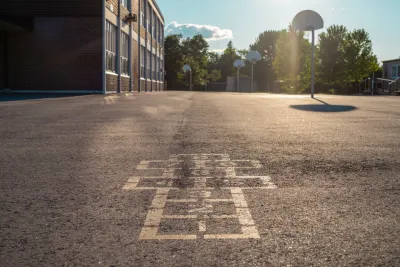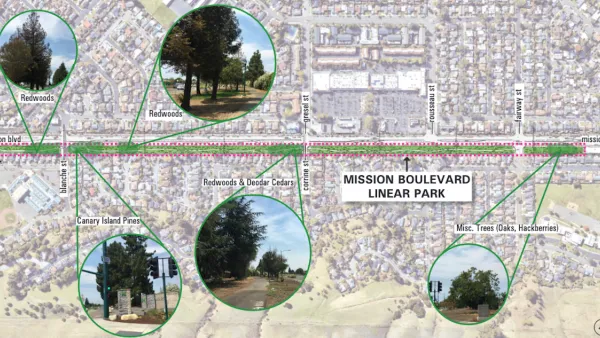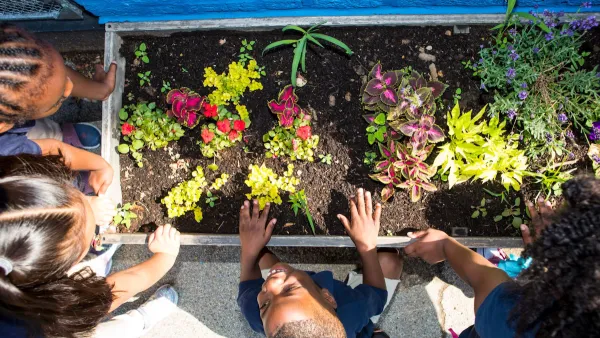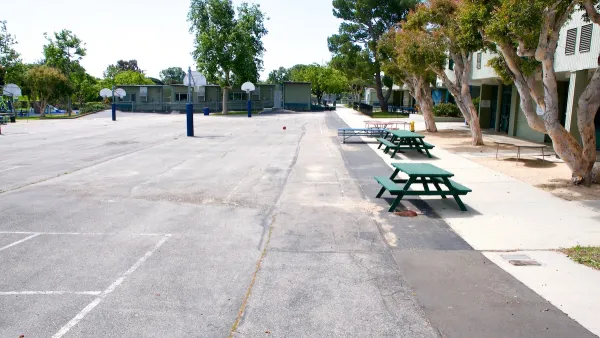New research suggests that switching from asphalt to green, park-like schoolyards brings economic benefits in addition to public health improvements.

“A new study from Trust for Public Land effectively dispels a common misconception among school administrators about the price tag of transforming asphalt-covered and treeless schoolyards into green schoolyards,” according to a press release from TPL. “The study compared the typical cost of building and maintaining a traditional ‘gray’ or asphalt-covered schoolyard in California to a ‘green’ schoolyard (replacing asphalt with more natural green space and infrastructure) over a 20-year period. While gray schoolyards had a moderately lower initial renovation cost ($2.3 million compared to $2.6 million for green schoolyards), they yielded no benefits over time, with schools continuing to sink money into resealing asphalt.” By contrast, green schoolyards bring close to $600,000 in net benefits. These include higher student attendance and staff retention, better academic performance, and savings on energy costs.
“The findings make a strong case for schools to stop wasting resources in maintaining asphalt and blacktop – surfaces that create uncomfortable and dangerously hot environments during recess on triple-digit temperature days in Los Angeles – and instead invest them in green schoolyards, which create safer, healthier learning environments for students.”
Green schoolyards can also double as community parks outside of school hours, providing critical green space in park-poor neighborhoods. “Trust for Public Land’s pilot program with the Oakland Unified School District is improving park equity in the area by bringing green schoolyards to five campuses.” In Southern California, Los Angeles Unified School District’s superintendent Alberto Carvalho has pledged to issue a plan for greening the city’s schoolyards.
FULL STORY: Cost-Benefit Analysis: Green Schoolyards Brings Major Benefits, Cost Savings

National Parks Layoffs Will Cause Communities to Lose Billions
Thousands of essential park workers were laid off this week, just before the busy spring break season.

Retro-silient?: America’s First “Eco-burb,” The Woodlands Turns 50
A master-planned community north of Houston offers lessons on green infrastructure and resilient design, but falls short of its founder’s lofty affordability and walkability goals.

Delivering for America Plan Will Downgrade Mail Service in at Least 49.5 Percent of Zip Codes
Republican and Democrat lawmakers criticize the plan for its disproportionate negative impact on rural communities.

Test News Post 1
This is a summary

Test News Headline 46
Test for the image on the front page.

Balancing Bombs and Butterflies: How the National Guard Protects a Rare Species
The National Guard at Fort Indiantown Gap uses GIS technology and land management strategies to balance military training with conservation efforts, ensuring the survival of the rare eastern regal fritillary butterfly.
Urban Design for Planners 1: Software Tools
This six-course series explores essential urban design concepts using open source software and equips planners with the tools they need to participate fully in the urban design process.
Planning for Universal Design
Learn the tools for implementing Universal Design in planning regulations.
EMC Planning Group, Inc.
Planetizen
Planetizen
Mpact (formerly Rail~Volution)
Great Falls Development Authority, Inc.
HUDs Office of Policy Development and Research
NYU Wagner Graduate School of Public Service





























